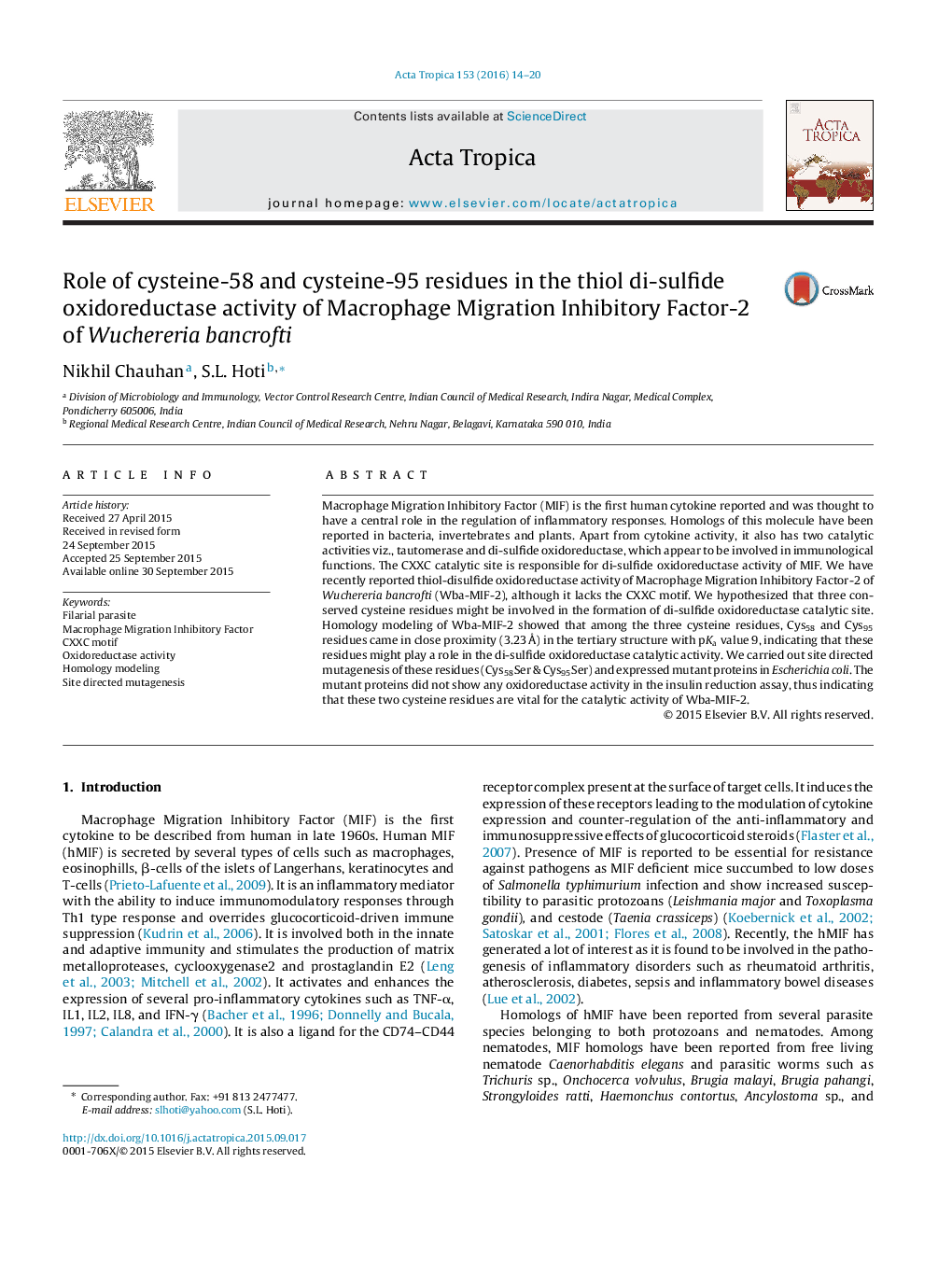| Article ID | Journal | Published Year | Pages | File Type |
|---|---|---|---|---|
| 3393785 | Acta Tropica | 2016 | 7 Pages |
•The common C57XXC60 motif for oxidoreductase activity is absent in Wba-MIF-2.•In Wba-MIF-2, Cys58 and Cys95 are found involved in oxidoreductase activity.•Cys58 and Cys95 are in proximity of 3.23 Å in tertiary structure with pKa value 9.•Cys58 and Cys95 motif showed 66.6% similarity with C57XXC60 motif.•Change in motif creates a possibility to develop specific inhibitory molecules.
Macrophage Migration Inhibitory Factor (MIF) is the first human cytokine reported and was thought to have a central role in the regulation of inflammatory responses. Homologs of this molecule have been reported in bacteria, invertebrates and plants. Apart from cytokine activity, it also has two catalytic activities viz., tautomerase and di-sulfide oxidoreductase, which appear to be involved in immunological functions. The CXXC catalytic site is responsible for di-sulfide oxidoreductase activity of MIF. We have recently reported thiol-disulfide oxidoreductase activity of Macrophage Migration Inhibitory Factor-2 of Wuchereria bancrofti (Wba-MIF-2), although it lacks the CXXC motif. We hypothesized that three conserved cysteine residues might be involved in the formation of di-sulfide oxidoreductase catalytic site. Homology modeling of Wba-MIF-2 showed that among the three cysteine residues, Cys58 and Cys95 residues came in close proximity (3.23 Å) in the tertiary structure with pKa value 9, indicating that these residues might play a role in the di-sulfide oxidoreductase catalytic activity. We carried out site directed mutagenesis of these residues (Cys58Ser & Cys95Ser) and expressed mutant proteins in Escherichia coli. The mutant proteins did not show any oxidoreductase activity in the insulin reduction assay, thus indicating that these two cysteine residues are vital for the catalytic activity of Wba-MIF-2.
Graphical abstractFigure optionsDownload full-size imageDownload as PowerPoint slide
